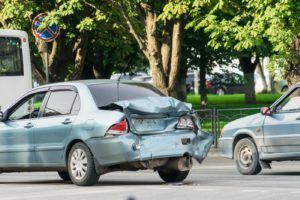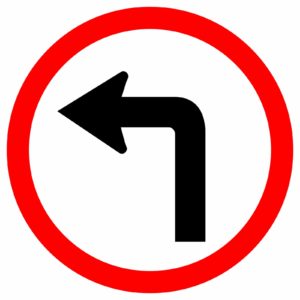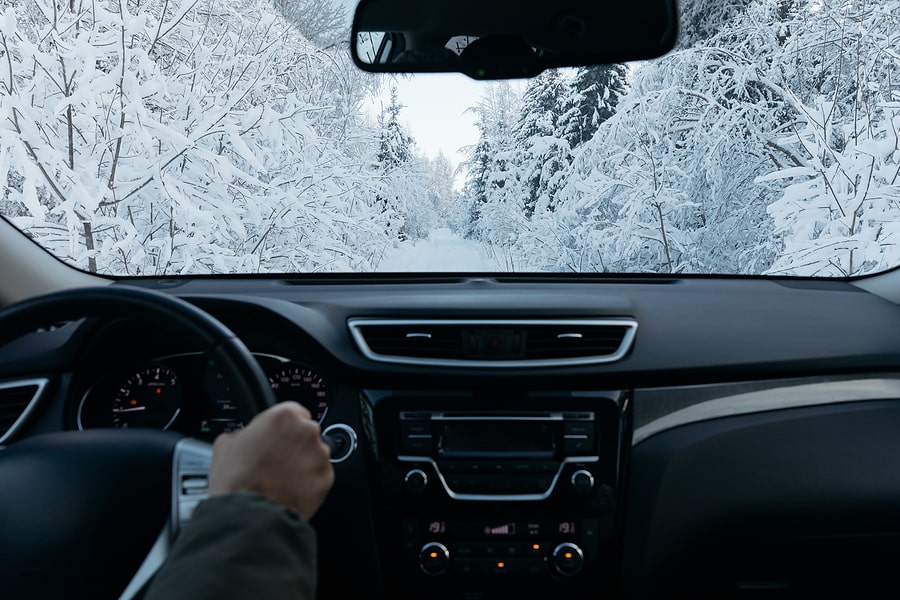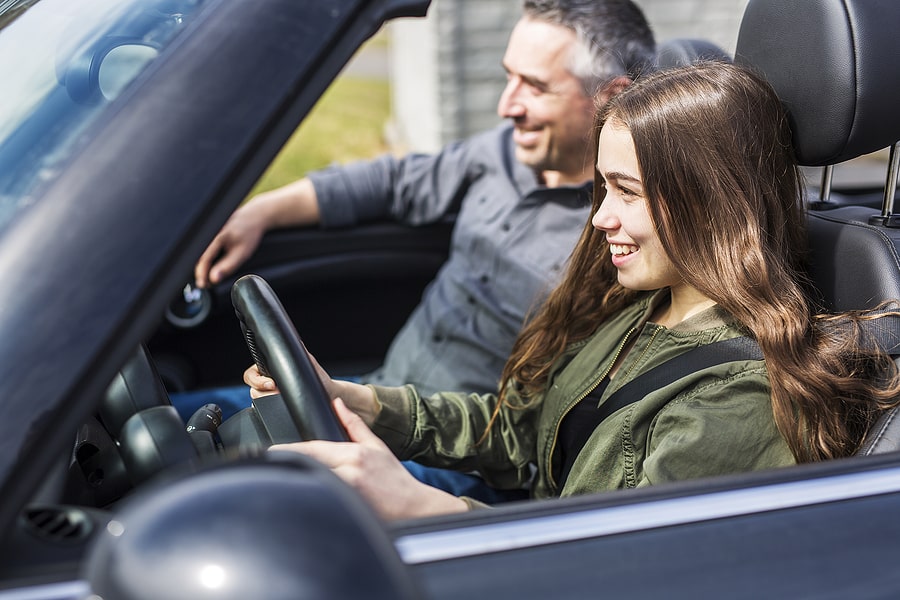Accidents happen every day. In fact, according to the National Highway Traffic Safety Administration (NHTSA), there were 6,734,000 police-reported accidents in one recent year.
That’s an average of over 18,000 accidents per day!
Thankfully, a great deal of these are minor accidents. Regardless of the severity of the accident, there’s one critical fact all insurance companies will want to know:
WHO’S AT FAULT?
Let’s be honest. The goal of all insurance companies is to get away with paying as little as possible. They are in the business of making money, no matter how much they claim they want to take care of people.
If they can assign blame to you, they will.
So while an accident may seem straightforward, insurance companies will always try to find some way to spin it in their favor.
There are several scenarios, however, where it’s actually a “no-brainer” to determine who the at-fault party is. The experienced car accident attorneys at the Stewart J. Guss, Injury Accident Lawyers have outlined a few of these situations below. Of course, some accidents seem easy to figure out, but when you and your legal team dig a little deeper, nothing is at it seems. That’s why it’s important for you to never discuss fault at the scene of an accident.
Here’s a look at some of the most common scenarios, plus a few factors that may change the course of a legal case.
Scenario 1: Rear-End Accident
Rear-end accidents are one of the most straight-forward types of accidents. A rear-end accident happens when one vehicle runs into another vehicle from behind. The collision involves the front end of the “trailing” vehicle and the rear-end of the “leading” vehicle. Minor rear-end collisions are commonly known as “fender benders,” but a lot of damage lurks behind that cutesy name.
Rear-end accidents are some of the most common types of accidents on the road. In fact, according to the National Highway Traffic Safety Administration, nearly half of all two-vehicle crashes during one three-year period were rear-end accidents! The primary cause? DRIVER INATTENTION.
In almost all cases, the trailing driver is the at-fault party. This scenario happens so often that this is usually the default assumption of investigators and insurance carriers.
As a driver, you have a responsibility to maintain a safe driving distance and be aware of your surroundings. Even if the lead driver unexpectedly slammed on their brakes, it is expected you should have enough time to stop. This is why tailgating is universally frowned upon.
Rear-end accidents happen everywhere. Some of the most common locations for rear-end accidents include:
- Stoplights: There are two ways a rear-end accident happens at stoplights. Scenario one: the driver is stopped at a red light, and the vehicle behind them does not stop in time. Scenario two: both vehicles are stopped at a red light, the light turns green, and the trailing vehicle starts to go before the lead vehicle.
- Parking lots: Rear-end accidents in parking lots are common. One of the main reasons for this is vehicles are always stopping and going. Drivers have to stop for pedestrians and other motorists as they move throughout the lot. An accident can easily occur when the rear driver does not see the driver in front of them stop.
- In the middle of the road: A rear-end accident can happen when one driver stops to make a turn or yield to a pedestrian. Most drivers don’t anticipate stops in the middle of the road and can be taken by surprise.
- The freeway: Rush hour can be a nightmare for drivers. Heavy congestion and merging drivers mean plenty of stop-and-go traffic. Accidents happen when a vehicle stops suddenly, another driver moves in unexpectedly, or a driver accelerates too quickly. Rear-end collisions are even worse when they happen at high freeway speeds.
Scenario 2: Driver Ran a Red Light
Drivers running red lights are a serious problem. According to AAA, in a recent year there were 939 fatalities caused by a driver running a red light. These numbers keep going up over time.
When a driver runs a red light, the most common type of collision is a T-bone collision, also known as a side-impact or broadside collision. This type of accident occurs when the front end of a vehicle collides with the side of a vehicle.
Compared to other parts of the vehicle, the side of a vehicle provides much less protection in the event of an accident. That’s what makes these types of accidents so dangerous.
Regardless of whether the car that ran the red light struck another vehicle or was struck by oncoming traffic, the person who ran the red light is typically at fault.
Common reasons for running a red light include:
- The driver was in a hurry: In the 1984 movie Starman, there’s a classic line from an alien driver who causes an accident: “Red light means stop, green light means go, yellow light means go very fast!” While the quote is humorous, it also explains a dangerous mentality many drivers have. Of course, the appropriate action at a yellow light is to slow down and stop when safe, and the appropriate action at a red light is obvious – STOP! When drivers try to speed through yellow lights, they run the risk of the light turning red while they are in the intersection. Other drivers may proceed on a green light and drive into the driver.
- Driving under the influence: One of the most common causes of drivers running red lights is driving under the influence. Alcohol affects a driver’s ability to concentrate, make decisions, and even see clearly.
- Distracted driving: Several states have enacted laws to prohibit mobile phone usage while driving, yet distracted driving continues to be a serious problem. When drivers take their eyes off the road to snack, chat, or play on their smartphone, they may not realize that the light has turned red, and other people suffer the consequences.
Scenario 3: Collisions Involving a Left Turn with No Turn Signal
Left turns require drivers to turn in front of oncoming traffic. This can be very dangerous at an intersection where the driver does not have a turn light. If a driver is making a left turn at a green light, he or she is expected to yield to oncoming traffic. This means that the driver must wait until there is enough room for him or her to turn, even if it means waiting through more than one light cycle.
Left turns on solid green lights can take a long time. This can cause the turning driver to become impatient and take risks when making a turn. Where a more experienced driver may wait for a large window, someone in a hurry may rush through the intersection and cause a pile-up. The oncoming driver may hit the turning driver on the side or at an angle. In many cases, the force of this accident can push both vehicles into other vehicles, causing an even more serious accident!
Scenario 4: Parking Lot Accidents
Parking lot accidents happen all the time.
Thankfully, most of these accidents involve low speeds and minor injuries.
But sometimes even a low-speed crash can cause a serious injury, such as neck and back injuries or other soft tissue injuries.
Here are a few common types of parking lot accident scenarios:
- A driver is hit while backing out of a parking space. In this case, the driver that is backing up would normally be at fault. This may seem counterintuitive since we already know that we need to allow enough space to react to other drivers; however, in this scenario, the driver moving forward has the right of way. Drivers backing out of a space should always check their mirrors and make sure their area is clear before moving.
- A driver is moving out of a parking space and exiting forward through an empty space. Sometimes, it just seems simpler to drive through the empty space in front of you to exit your space instead of backing up. But what happens if another driver doesn’t see you and is entering the space at the same time that you are trying to exit it? Again, the driver exiting the space is at fault because they are technically going the wrong way, but in terms of liability, this situation can be very complicated.
- Two vehicles collide after trying to enter the same space. One may argue that the driver who was there first had the right of way, but this isn’t really a solid legal argument. You cannot legally hold a parking space. In this scenario, it comes down to who has the right of way. This is another situation that can be very complicated to figure out.
- Two vehicles collide at the end of an aisle. When one driver is coming to the end of an aisle and the other driver is driving perpendicular to the aisles, the intersection should be treated as an “unsignalized” intersection. While the person driving perpendicular to the aisles may think that they have the right of way because they are in a “lane,” the person in the aisle may be continuing into a lane to exit the parking lot. There are many factors that come into play in such an accident, and liability may be hard to determine. A qualified attorney may be able to help.
Variables That May Affect Who Is At-Fault
Every accident is unique. While there are some situations where the fault is crystal clear from any outsider’s perspective, other factors may completely shake things up.
For example, the first scenario of a rear-end collision outlines that the trailing driver is almost always at fault. But let’s throw in a curveball: the front driver was completely drunk and randomly stopped in the middle of the road for no reason. In this case, the lead driver would likely be determined to be at fault.
Even if you think you caused an accident, NEVER ADMIT BLAME and make sure to have a personal injury attorney look at the facts of the case. Take a look at some other factors that may make things a little more complicated than they appear:
- Driver fatigue: Tired drivers are just as dangerous as drunk drivers. When you are overly exhausted, your body can shut down with no notice. A driver may stop suddenly, swerve, or begin to decelerate.
- Drunk driving: Drunk drivers aren’t just irresponsible, they’re unpredictable. Because of this, it’s hard to anticipate their actions. A drunk driver may drive too slow, too fast, or make unexpected stops.
- Mechanical failure: Sometimes cars fail. Vehicle owners are responsible for properly maintaining their vehicles. When an accident happens because of poor maintenance records, the driver will be at fault. However, if a defective part contributed to the accident, the collision may have been out of the driver’s control. In this case, the vehicle or part manufacturer may share responsibility.
- Other drivers: Sometimes, it is the actions of a third driver that causes a collision. For example, if driver A cuts in front of driver B, driver B may swerve into the adjacent lane to avoid a collision. This may cause driver B to drive head-on into driver C. In this case, driver A may be responsible for the injuries and damages to driver B and driver C.
How a Personal Injury Attorney Can Help
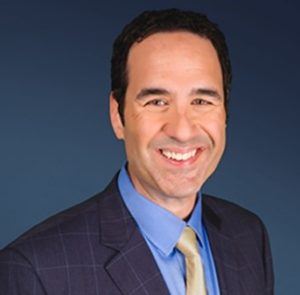
After an accident involving injuries, it’s crucial to talk to a personal injury attorney. Even if you think that you might hold some of the blame, an experienced attorney can help you determine whether that is actually the case (and in many cases, IT’S NOT!)
Insurance companies try to determine fault early on, and they will try to place the blame on anyone but the driver that they insure. That’s why you should NEVER make a statement to an insurance company without first consulting with an attorney. There are many things that an attorney can do to help prove fault in an accident. This may include:
- Talking to other drivers and witnesses
- Collecting evidence
- Hiring specialists to reconstruct the accident
Once fault has been determined, a personal injury attorney can help you file a personal injury lawsuit.
We understand accidents may leave serious injuries that can have a tremendous effect on your physical, emotional, and financial well-being.
If you were injured in a car accident, you deserve fair compensation. You deserve JUSTICE For more information, contact an experienced car accident attorney.


